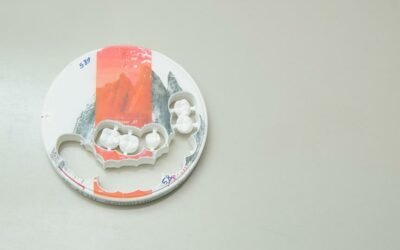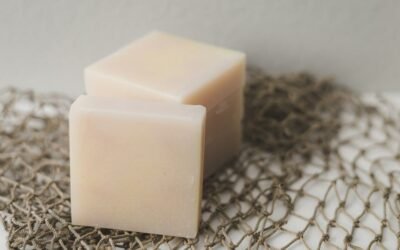Are you wondering if an ionizer can effectively kill mold? Discover the science behind ionizers and how they combat mold spores.
Explore the pros and cons of using an ionizer for mold remediation, and find out what factors you should consider before using one.
Additionally, learn about alternative solutions for eliminating mold spores.
Get all the information you need to make an informed decision on whether an ionizer is the right choice for your mold problem.
Key Takeaways
- Ionizers release negatively charged ions into the air, which attach to positively charged mold spores and neutralize them, making them easier to remove.
- Ionizers help remove mold spores from the air and improve indoor air quality by eliminating odors associated with mold and neutralizing volatile organic compounds (VOCs).
- However, ionizers may not completely eliminate mold spores and they may still be present on surfaces after ionization. Some ionizers also produce ozone, which can be harmful to health, so they should be used in well-ventilated areas and following manufacturer's guidelines to minimize ozone exposure.
- It is important to consider the type of mold present, the size of the space, and address the source of moisture causing mold growth before using an ionizer. Regular cleaning and maintenance are necessary for ionizers, and alternative solutions such as HEPA filters, hydrogen peroxide, and borax should also be considered for comprehensive mold removal.
How Does an Ionizer Work
An ionizer works by releasing negatively charged ions into the air to neutralize and eliminate mold spores. These ionizers are equipped with a technology known as corona discharge, which produces the negatively charged ions. When the ionizer is turned on, an electrical discharge is created within its ionization chamber. This discharge causes the air molecules to become ionized, resulting in the production of negatively charged ions.
Once released into the air, these negatively charged ions attach themselves to the positively charged mold spores. This process, known as ionization, effectively neutralizes the mold spores by reducing their positive charge. As a result, the mold spores lose their ability to cling to surfaces and become airborne. Once airborne, the mold spores are easily captured by air filters or fall onto surfaces, making them easier to clean and remove.
Furthermore, the negatively charged ions produced by the ionizer also have the ability to bind with other airborne particles, such as dust and allergens. This binding process causes these particles to become heavy and fall out of the air, effectively reducing their presence in the environment.
The Impact of Ionizers on Mold Spores
Using an ionizer can have a significant impact on mold spores in your environment. Mold spores are tiny, microscopic particles that are released into the air by mold colonies. These spores can cause allergic reactions, respiratory issues, and even contribute to the growth of more mold.
An ionizer works by emitting negative ions into the air. These ions attach themselves to the positively charged mold spores, causing them to become heavy and fall out of the air. This process is known as ionization. Once the mold spores have fallen out of the air, they can be easily cleaned up and removed from your environment.
It's important to note that ionizers are most effective when used in conjunction with other mold prevention and remediation methods, such as proper ventilation, moisture control, and regular cleaning. Additionally, it's crucial to choose an ionizer that's specifically designed to target mold spores. Some ionizers may not be effective against mold spores or may produce ozone, which can be harmful to your health.
Therefore, it's essential to research and select a high-quality ionizer that meets your specific needs.
Pros and Cons of Using an Ionizer for Mold Remediation
To determine the effectiveness of an ionizer for mold remediation, consider the advantages and disadvantages of using this device.
Ionizers are electronic devices that release negatively charged ions into the air. These ions attach themselves to positively charged particles, such as mold spores, causing them to become heavy and fall to the ground. One advantage of using an ionizer for mold remediation is that it can help remove mold spores from the air, reducing the likelihood of mold growth and potential health issues associated with mold exposure.
Another advantage of using an ionizer is that it can help eliminate odors associated with mold. The negatively charged ions produced by the ionizer can neutralize the positively charged particles in the air, including the volatile organic compounds (VOCs) released by mold. This can help improve indoor air quality and create a more pleasant environment.
However, there are also some disadvantages to consider when using an ionizer for mold remediation. One drawback is that ionizers may not be effective in completely eliminating mold spores. While the ions can cause the spores to fall to the ground, they may still be present on surfaces and require additional cleaning methods to fully remove them.
Additionally, ionizers can produce ozone as a byproduct, which can be harmful to human health when present in high concentrations. Ozone can irritate the respiratory system and worsen existing respiratory conditions. It's important to use ionizers in well-ventilated areas and follow manufacturer's guidelines to minimize ozone exposure.
Factors to Consider Before Using an Ionizer for Mold
Before deciding to use an ionizer for mold, you should consider several factors. While ionizers can be effective in reducing mold spores in the air, there are certain considerations that need to be taken into account.
- Type of mold: It's important to identify the type of mold present in your environment before using an ionizer. Some types of mold produce mycotoxins that can be harmful to human health. In such cases, it's best to consult with a professional mold remediation expert.
- Size of the area: Ionizers are most effective in small enclosed spaces. If you're dealing with a large area affected by mold, an ionizer may not be sufficient. In such cases, it's advisable to use other mold remediation methods such as HEPA filtration or professional mold removal services.
- Source of moisture: Mold thrives in moist environments. Before using an ionizer, it's essential to identify and address the source of moisture that's causing mold growth. Failure to address the underlying moisture issue can result in recurring mold problems.
- Maintenance and upkeep: Ionizers require regular cleaning and maintenance to ensure their effectiveness. The plates or filters in the ionizer need to be cleaned or replaced periodically. Neglecting maintenance can lead to reduced efficiency and ineffective mold reduction.
Considering these factors will help you make an informed decision about whether an ionizer is the right choice for mold remediation in your specific situation.
Alternative Solutions for Killing Mold Spores
Consider other methods to eliminate mold spores. While ionizers may be effective in reducing airborne mold particles, there are alternative solutions that can help you tackle the problem more comprehensively.
One such method is using a HEPA (High Efficiency Particulate Air) filter. These filters are designed to capture microscopic particles, including mold spores, from the air. By trapping the spores, HEPA filters can prevent them from spreading and help improve indoor air quality.
Another option is using hydrogen peroxide. This powerful disinfectant can kill mold spores on contact. Mix a solution of hydrogen peroxide and water in a spray bottle and apply it to the affected areas. Let it sit for a few minutes before scrubbing the surface clean. Remember to wear protective gear, such as gloves and a mask, to avoid any potential health risks.
Borax is another effective solution for killing mold spores. Mix one cup of borax with one gallon of water and use a scrub brush to apply the solution to the mold-infested areas. Leave it to dry and then vacuum or wipe away any remaining residue. Borax not only kills mold spores but also prevents them from returning.
Conclusion
In conclusion, while ionizers can help reduce the presence of mold spores in the air, they aren't a foolproof solution for killing mold.
Ionizers work by releasing negatively charged ions that attach to airborne particles, causing them to become heavy and fall to the ground.
However, they may not completely eliminate mold spores on surfaces or in hard-to-reach areas.
It's important to consider other remediation methods, such as proper ventilation, moisture control, and targeted cleaning, to effectively address mold issues.





0 Comments